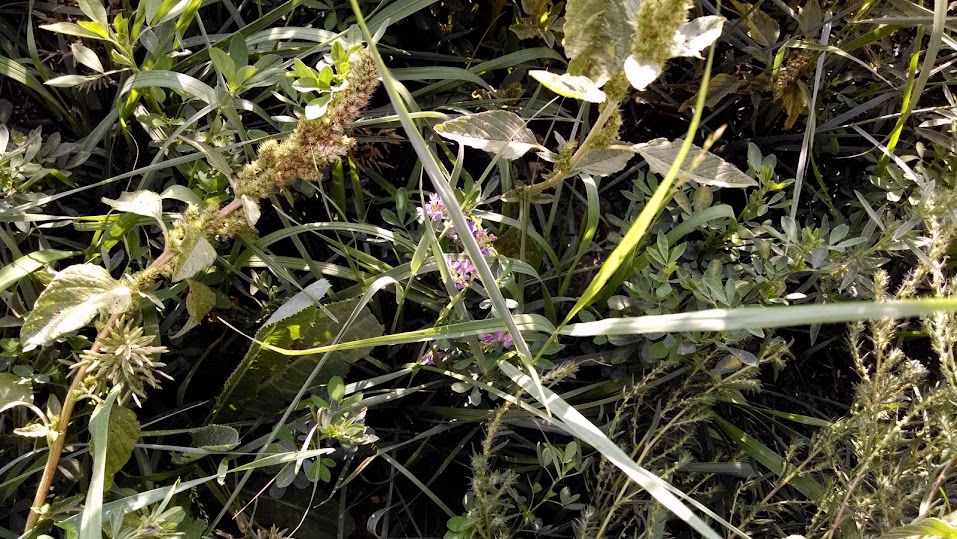Ok, so this isn't normally the type of plant diversity we are shooting for…

The above photo has a bunch of weeds in it. From the road, that's all you can see. I'm sure there have been a number of folks driving past this field wondering what kind of poor managers we are to allow all those weeds to take over that field. I would be thinking exactly the same thing normally. But, I know something most of them don't.

Here we are a little closer to the weedy mess. You may start to notice some flowers. The purple ones are alfalfa. They yellowish-reddish one is a blanket flower, a native wildflower. Over towards the right, in the foreground, theres a tall, slender spear of grass that goes almost from top to bottom of the photo…that's the seed head of sideoats grama, a warm-season native grass.

Now we're up close and personal with this weed patch. But things look a lot differently now. Yes, we still see weeds. But there's a lot more grass in there than previously thought. And lots of alfalfa coming as well.
This field, and another nearby, we seeded back to grass and other plants this spring. It had been farmed or cut for hay for quite some time, maybe 100 years. It has always been marginal farm ground due to the heavy clay soil type. Here's the mix of plants we sowed:
Big bluestem, alfalfa, green needlegrass, western wheatgrass, switchgrass, intermediate wheatgrass, sideoats grama, maximilian sunflower, blanket flower, hoary vervain, wild bergamot, golden alexanders, purple prairieclover, white prairieclover, and Illinios bundleflower.
It normally takes 3-5 years to get a stand of native grasses and forbs established, so it might look like a weedy mess for a while. Spraying the weeds would kill all the wildflowers we planted, so that's not an option. We did mow the field in June to trim the weeds back a bit, giving the new seedlings more sunlight and less competition, but you can't tell now. These weeds are all annual weeds. They establish easily, grow quickly, and their seed can survive a long time
But you know, the weeds aren't all bad either. Jay Fuhrer, a district conservationist with NRCS in North Dakota, says that soil tries to heal itself, and it does that with living things – which weeds are, of course. It's nature trying to cover itself up. Those weeds are protecting the soil from sunlight, wind and water erosion, and softening the impact of falling rain (which can cause soil crusting, limiting the amount of precipitation that can soak into the soil).
The weeds are also feeding the below-ground biology while the native perennial plants are getting established. A teaspoon of productive soil has between 100 million and 1 billion bacteria. Imagine two cows grazing on an acre of rangeland. Believe it or not, there is the equivalent (by weight) of two more cows feeding off that acre – that is, the below-ground biology. They need living and dying plant and animal tissue to live. Without the weeds, the bacteria don't have much to eat.
In time, the species we seeded will take over and the weeds will diminish. Until then, it will be the ugly caterpillar that nobody thinks much of. We're expecting the beauty that unfolds over the next few years will be worth it though!
